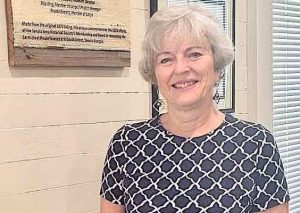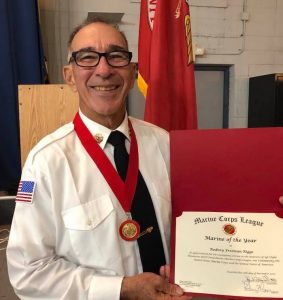American Medical Response (AMR) just completed its first year at the emergency medical transport provider for Coweta County. Company representatives in an Aug. 7 presentation to the Coweta County Commission highlighted the first year’s activities that included increased emergency calls, goal-exceeding response times and the addition of new cardiac equipment at no cost to the county.
Coweta County Administrative and Operations Director Tom Corker at the outset of the presentation noted that AMR on July 31 had ended its first year of operation as the county’s emergency medical transport provider. Corker said the past year had been a collaborative team effort between AMR, Coweta County and the Coweta County Fire Department.
“Thanks to you, we were able to move forward with placement of AVL (satellite vehicle locating technology) on all vehicles to track ambulance movement and we were able to install on-board computers for enhanced communication,” Corker told commissioners.
Corker also noted that the first year of operation had experienced some problems and that those problems had been addressed.
AMR representatives said the service had received 11,741 calls during the first year of operation, an increase of more than 1,200 calls in Coweta over the previous year. A breakdown of the calls showed that 69.43 percent came from the county’s unincorporated areas.
AMR Clinical Education Specialist Jason Rowland said the company last year set a response goal of 8 minutes per call. That means calls would average no more than 8 minutes from the time of dispatch to the time of arrival at the scene. The goals was reached and exceeded, Rowland said, with a countywide average of 7 minutes, 45 seconds. A further breakdown showed 7 minutes, 8 seconds in Newnan and 8 minutes, 4 seconds in the county outside Newnan.
Tracking a different measure, one of the average elapsed time from dispatch to en route to the scene, Rowland said that time was 38 seconds both in Newnan and the county.
Another portion of the presentation dealt with the aim of improving cardiac care. A part of that care dealt with cardiac resuscitation rates. Rowland said a 2005-2010 study of patient ROSC (return of spontaneous resuscitation) rates upon hospital admission was 26 percent. That rate had increased to 49 percent during the past year, Rowland said.
Medical transport units across the county are also outfitted with the latest model of the LUCAS chest compression device. Supplied at AMR at no cost to the county, the LUCAS device is a manual chest compression unit that fits around the patient’s chest. It can be applied within approximately 20 seconds and allows for defibrillation with ongoing compressions, thus freeing the EMT to provide other needed medical assistance, Rowland said.











Leave a Comment
You must be logged in to post a comment.